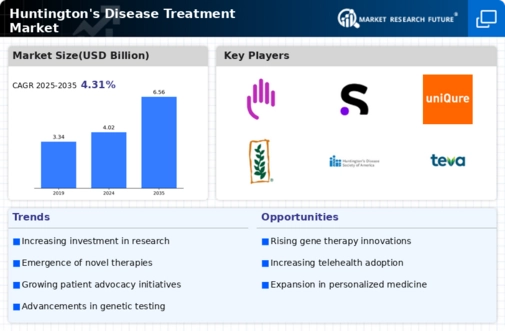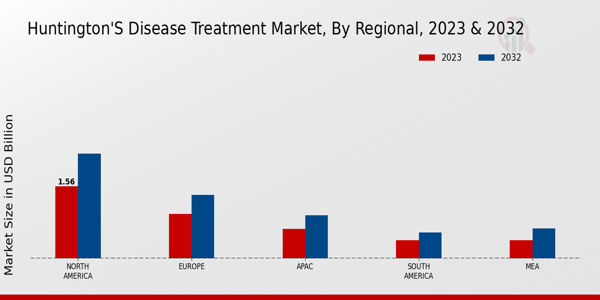The Huntington's Disease Treatment Market has witnessed significant developments owing to the rising incidence of the disorder and the growing awareness regarding its treatment options among healthcare professionals and patients. Competitively, this market is characterized by the presence of a mix of pharmaceutical giants and smaller biotechnology firms. The landscape is marked by innovation, as companies are focused on developing novel therapies and precision medicine approaches to improve patient outcomes. Moreover, strategic collaborations, mergers, and acquisitions are increasingly common as companies aim to expand their product offerings and market reach.
The competitive insights reveal that players in this market are leveraging their research capabilities and advanced technologies to formulate effective treatments that can significantly alter the disease's progression.BristolMyers Squibb has established a pronounced presence in the Huntington's Disease Treatment Market through its robust pipeline and commitment to research and development. The company is recognized for its strength in immunological and neuroscience therapeutic areas, contributing to a diversified portfolio that includes therapies focused on neurological disorders.
BristolMyers Squibb differentiates itself through its strategic partnerships with academic institutions and research organizations, enhancing its capabilities in clinical trials and accelerating the development of new treatments.
The company’s focus on innovative therapies, combined with a strong reputation in healthcare, positions it well to capture a significant share of the Huntington's Disease Treatment Market, thereby reinforcing its competitive edge.Sanofi is another key player in the Huntington's Disease Treatment Market, known for its dedication to advancing therapies that address unmet medical needs. With a footprint and a strong emphasis on research, Sanofi’s strengths lie in its established relationships with healthcare providers and deep understanding of patient needs.
The company has made substantial investments in developing targeted therapies aimed at the root causes of Huntington's disease, showcasing its commitment to enhancing patient quality of life. Sanofi's integrated approach, which includes patient engagement and support programs, allows the company to effectively connect with patients and healthcare practitioners, thus bolstering its position in the competitive landscape of Huntington's Disease treatment. Its ongoing efforts to innovate and address the complexities of the disease will further enhance its relevance in this specialized market.























